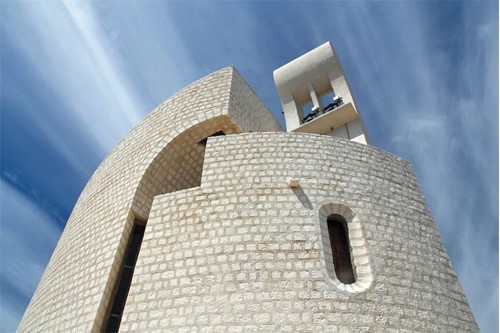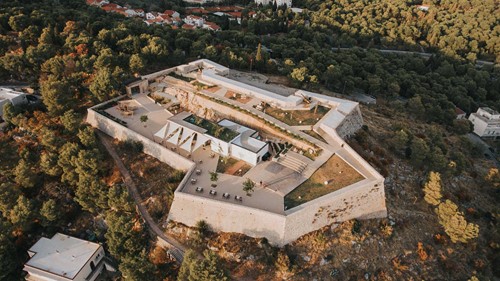Top Coastal Heritage to Discover
The Cathedral of St. James
The Cathedral of St. James is an illustrious UNESCO World Heritage Site and the most valuable architectural monument built during the 15th and 16th century in Croatia. It is the only cathedral in the whole of Europe constructed entirely of stone, as no wooden architectural elements nor bonding plaster were used for its building. According to its beauty, construction techniques and style characteristics, it is not only the biggest and the most valuable object of the architectural heritage in the town of Šibenik but it is also the unique monument of European sacral architecture. According to its artistic value, it belongs to the most valuable European monumental cathedrals, and thanks to some of its features, it is unique not only among the cathedrals but among Christian churches in general!
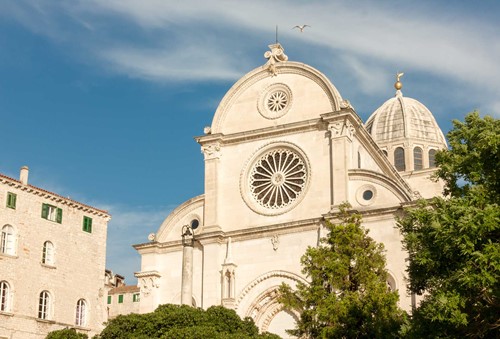
St. Nicholas Fort
St. Nicholas Fort, one of the newest additions to the list of UNESCO World Heritage Sites, as an integral part of the 15th to 17th century Venetian Defence System, was constructed during the 16th century and located at the entrance to St. Anthony's Channel. Building of the fort was an important undertaking not only for the citizens of Šibenik but also for those who ruled it, as it was built in order to protect the town from Turkish attacks from the sea. The fort erected at the entrance to the narrow mile long channel became the important strategic defensive structure that contributed to the impregnability of Šibenik Port and the town of Šibenik itself. The only entrance into Šibenik Bay was through the channel, which made possible the effective defence and complete control of the entry of ships.

Pevnost sv. Mihovila
Tato nejstarší městská pevnost je významnou kulturní a historickou památkou Šibeniku. Středověká pevnost je pramenem města a první historická zmínka se datuje do roku 1066. Postavena byla za účelem kontroly a obrany šibenické laguny a ústí řeky Krky. Impozantnost a síla čtyřúhelníku obehnaného hradbami učinila z pevnosti dominantního ochránce území. Dnes pevnost můžete navštívit s audio průvodcem a v jejím interiéru si prohlédnout 3D mapovací projekce. Rozpoznáte ji podle jeviště pod širým nebem s kapacitou 1077 míst. Toto jeviště se během krátké doby stalo jedním z nejprestižnějších jevišť v celém regionu.
Info a vstupenky:
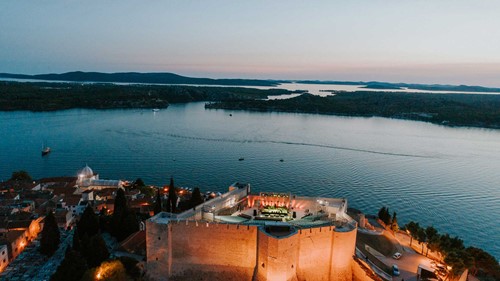
Pevnost sv. Ivana
Pevnost sv. Ivana byla vybudována během srpna a září 1646, za pouhých 58 dní, jako hlavní bod nového obranného systému města těsně před velkým útokem osmanské armády. Pevnost vybudovali občané Šibeniku vlastníma rukama podle návrhu janovského inženýra fra Antonia Leního. Dnes je pevnost revitalizovaná a v podzemní části se „skrývá“ vzdělávací kampus. V teplých měsících je to místo, kde si můžete dát kávu nebo drink s výhledem na město a širší okolí.
Info a vstupenky:
Pevnost Barone
Pevnost Barone byla vybudována v létě roku 1646 souběžně s nedalekou pevností sv. Ivana. Vybudovali je občané Šibeniku za necelé dva měsíce, aby posílili obranu svého města proti Osmanům. Dnes je to místo, kde můžete pomocí technologie rozšířené reality nahlédnout do minulosti Šibeniku. Bar Barone je ideální pro první ranní kávu nebo drink při západu slunce. Letní večery jsou pak na Barone vyhrazeny jazzovým koncertům, tanečním vystoupením nebo filmovým večerům pod hvězdami. Atraktivní nabídku představuje také obchod se suvenýry, kde návštěvníci najdou upomínkové předměty na čas strávený v Šibeniku.
Info a vstupenky:
Šibenik Town Hall
The Town Hall of Šibenik is a very harmonious and open Renaissance building, erected between 1533 and 1546 and situated on the medieval central town square (plathea communis). The ground floor encompasses a cloister (with columns supporting semi-circular arches) from which there was an access to the offices of communal administration. The town hall was completely destroyed in December 1943 during the attack of the allied air forces. It was restored to its original form after the war, as well as organized and equipped in its interior according to the needs of its new function.
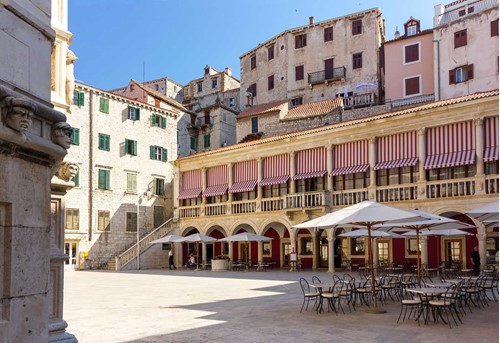
Šibenik Town Museum
The Town Museum of Šibenik was founded on December 20th 1925, on occasion of the thousandth anniversary celebration of the Croatian Kingdom, and it is nowadays located in the former Duke's Palace near St. James's Cathedral. The Duke's Palace took part in the coastal defence system built up in the 13th and 14th century and its adaptation was finished in 1975, making the modern functioning of the museum possible. The complete museum material is divided in three main collections: the archaeological department, the cultural-historical department and the department of recent history. The museum has achieved the most significant results in the field of scientific activities, exhibitions and publishing.

The Medieval Garden of St. Lawrence's Monastery
The medieval Mediterranean garden of St. Lawrence's Monastery was renovated and opened in 2007, after being forgotten for almost 100 years. The garden is a very rare sight, as it represents the only monastery garden in Croatia that follows the famous medieval scheme: cross paths with a little fountain in the middle and simple ground floor planning, enclosed by barberry and beautiful old-fashioned redolent roses. Medicinal and season herbs are planted in the four fields and a special place belongs to the artistic collection of thyme, with beautiful red, violet, grey, light green and dark green leaf colours. The capers planted in the wall holes are also an important sight of the garden, as a local legend says they were brought in Šibenik by famous constructor Juraj Dalmatinac.
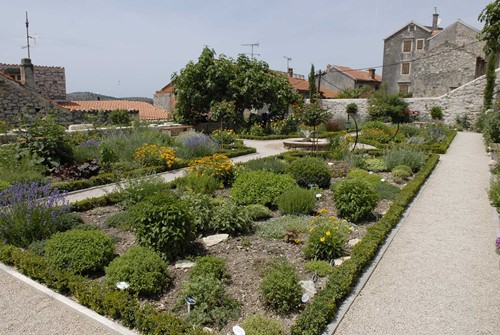
The Church and Monastery of St. Francis
St. Francis Church was raised in the second half of the 14th century at the furthest south-east part of Šibenik's historic core. The church represents spacious single-vessel Gothic architecture without decorative elements. Within the architectural complex of Šibenik's Conventual Franciscans there is also a monastery dated back to the 14th century and Museum. Since cultural-historic works of art were collected in this monastery for many centuries, it represents a place where a great deal of the city's monumental heritage is kept. The library is accentuated with a collection of 140 incunabula, as well as a collection of hand-written codices. Also found here is the "Šibenik Prayer", one of the oldest works of Croatian literature, written in Latin script around 1375.

The Church of St. Barbara
The Church of St. Barbara is a monument of Gothic architecture located in Šibenik. It is a single-naved church whose building started at about 1400. Above the main entrance there is a Gothic niche with a sculpture of St. Nicholas, the work of Italian artist Bonino from Milan. The Gothic window with the votive sculpture at its bottom was ordered by Šibenik's doctor Marco in 1419 and was placed in the north wall. It is a unique example of a medieval relief, presenting the doctor's features on the side facing the Adriatic. Today the church also houses a little museum with some very important works from the period between the 14th and 17th century.

The Church of the Lady of Mount Carmel
Looking from the sea, the panorama of Vodice is dominated by Okit Hill with its Church of the Lady of Mount Carmel. The first church on this rise was built in the 17th century, probably on the foundations of an earlier chapel. In the early 20th century, the Way of the Cross Church was built from the foot to the top of the hill with fourteen chapels, each one marking one station of the Way of the Cross. The church was expanded with several additions, but it was destroyed twice, during World War II and the Homeland War. The present appearance of the exquisite contemporary church is a work of renowned Zadar architect Nikola Bašić.
